Itinerary
Day programme:
Arrive at Brussels Airport. If your cruise package includes a group arrival transfer, or if you have purchased a private arrival transfer, you will be greeted by a Uniworld representative and transferred to the ship.
Day programme:
Brussels, the capital of Belgium, offers a treasure trove of historic architecture, along with a rich culinary tradition—chocolate!—and a vibrant culinary capital. Food lovers will be lured by the divine aromas drifting from the many holiday market stalls, while others will be attracted to the city’s enchanting architecture and elaborate Christmas displays.
Day programme:
On Christmas day, visit one of two national gems: beautiful Bruges, the capital of West Flanders and one of the best-preserved medieval cities in Europe, or fascinating Ghent, the capital city of East Flanders, whose long history does not weigh on its vibrant present. Belgium’s second-largest city, Ghent abounds in medieval architecture, which makes for a particularly magical canvas for the town’s Christmastime decorations.
Day programme:
Today, you’ll explore the trendy-yet-quaint town of Hasselt. A blend of city interest—with plenty of cafés, shopping and the area’s largest Christmas market—and an easygoing, small-town atmosphere, the mostly car-free Hasselt is a charming place to explore on foot. It is also, as you can discover at one of the tasting booths in the market, known as the unofficial capital of Belgium’s famous spirit, Jenever.
Day programme:
Venture into the Netherlands to visit Maastricht, known as one of the most beautiful and romantic cities in Holland and loved for its convivial lifestyle and historic center, which has long played a strategic role in European politics. Choose to explore this city’s Christmas market or head into Valkenburg for a unique underground Christmas Market experience.
Explore Antwerp, Belgium’s second city. Known for its diamond cutting industry, fashion and the many great artists that lived in its vicinity, Antwerp is a city focused on art and culture.
Day programme:
Discover an eclectic mix of historic and modern in Belgium’s “Second City,” Antwerp. The town intersperses its well-preserved medieval buildings with artful modern architecture.
Explore Antwerp, Belgium’s second city. Known for its diamond cutting industry, fashion and the many great artists that lived in its vicinity, Antwerp is a city focused on art and culture.
Day programme:
You’ll find a penchant for all things high quality in the country’s biggest port city. Diamonds, art, fashion, and more compete for attention here, so you’re sure to find just the thing to make your time in Antwerp memorable.
Rotterdam is a city that’s a long way removed from most people’s stereotypical notion of the Netherlands. There are few, if any, canals to be found here nor are there any quaint windmills. There is, however, a thriving modern city which is one of the busiest ports in the entire world.
Day programme:
Rotterdam is thoroughly modern—you’ll soon understand why it’s sometimes called “Manhattan on the Meuse”: The Maas Tower, the Montevideo, the Millennium Tower, and the spectacular Erasmus Bridge make for a dazzling skyline. And nearby: the city of Delft, where the Netherland’s traditional blue-and-white pottery is crafted by master artisans.
Amsterdam combines the unrivaled beauty of the 17th-century Golden Age city center with plenty of museums and art of the highest order, not to mention a remarkably laid-back atmosphere. It all comes together to make this one of the world’s most appealing and offbeat metropolises in the world. Built on a latticework of concentric canals like an aquatic rainbow, Amsterdam is known as the City of Canals—but it’s no Venice, content to live on moonlight serenades and former glory. Quite the contrary: on nearly every street here you’ll find old and new side by side—quiet corners where time seems to be holding its breath next to streets like neon-lit Kalverstraat, and Red Light ladies strutting by the city’s oldest church. Indeed, Amsterdam has as many lovely facets as a 40-carat diamond polished by one of the city’s gem cutters. It’s certainly a metropolis, but a rather small and very accessible one. Locals tend to refer to it as a big village, albeit one that happens to pack the cultural wallop of a major world destination. There are scores of concerts every day, numerous museums, summertime festivals, and, of course, a legendary year-round party scene. It’s pretty much impossible to resist Amsterdam’s charms. With 7,000 registered monuments, most of which began as the residences and warehouses of humble merchants, set on 160 man-made canals, and traversed by 1,500 or so bridges, Amsterdam has the largest historical inner city in Europe. Its famous circle of waterways, the grachtengordel, was a 17th-century urban expansion plan for the rich and is a lasting testament to the city’s Golden Age. This town is endearing because of its kinder, gentler nature—but a reputation for championing sex, drugs, and rock ’n’ roll does not alone account for Amsterdam’s being one of the most popular destinations in Europe: consider that within a single square mile the city harbors some of the greatest achievements in Western art, from Rembrandt to Van Gogh. Not to mention that this is one of Europe’s great walking cities, with so many of its treasures in the untouted details: tiny alleyways barely visible on the map, hidden garden courtyards, shop windows, floating houseboats, hidden hofjes(courtyards with almshouses), sudden vistas of church spires, and gabled roofs that look like so many unframed paintings. And don’t forget that the joy lies in details: elaborate gables and witty gable stones denoting the trade of a previous owner. Keep in mind that those XXX symbols you see all over town are not a mark of the city’s triple-X reputation. They’re part of Amsterdam’s official coat of arms—three St. Andrew’s crosses, believed to represent the three dangers that have traditionally plagued the city: flood, fire, and pestilence. The coat’s motto (“Valiant, determined, compassionate”) was introduced in 1947 by Queen Wilhelmina in remembrance of the 1941 February Strike in Amsterdam—the first time in Europe that non-Jewish people protested against the persecution of Jews by the Nazi regime.
Day programme:
The Netherlands’ largest city, Amsterdam has been an international port and financial center for 400 years, endowing it with a lively cosmopolitan feeling to match its historic architecture.
Amsterdam combines the unrivaled beauty of the 17th-century Golden Age city center with plenty of museums and art of the highest order, not to mention a remarkably laid-back atmosphere. It all comes together to make this one of the world’s most appealing and offbeat metropolises in the world. Built on a latticework of concentric canals like an aquatic rainbow, Amsterdam is known as the City of Canals—but it’s no Venice, content to live on moonlight serenades and former glory. Quite the contrary: on nearly every street here you’ll find old and new side by side—quiet corners where time seems to be holding its breath next to streets like neon-lit Kalverstraat, and Red Light ladies strutting by the city’s oldest church. Indeed, Amsterdam has as many lovely facets as a 40-carat diamond polished by one of the city’s gem cutters. It’s certainly a metropolis, but a rather small and very accessible one. Locals tend to refer to it as a big village, albeit one that happens to pack the cultural wallop of a major world destination. There are scores of concerts every day, numerous museums, summertime festivals, and, of course, a legendary year-round party scene. It’s pretty much impossible to resist Amsterdam’s charms. With 7,000 registered monuments, most of which began as the residences and warehouses of humble merchants, set on 160 man-made canals, and traversed by 1,500 or so bridges, Amsterdam has the largest historical inner city in Europe. Its famous circle of waterways, the grachtengordel, was a 17th-century urban expansion plan for the rich and is a lasting testament to the city’s Golden Age. This town is endearing because of its kinder, gentler nature—but a reputation for championing sex, drugs, and rock ’n’ roll does not alone account for Amsterdam’s being one of the most popular destinations in Europe: consider that within a single square mile the city harbors some of the greatest achievements in Western art, from Rembrandt to Van Gogh. Not to mention that this is one of Europe’s great walking cities, with so many of its treasures in the untouted details: tiny alleyways barely visible on the map, hidden garden courtyards, shop windows, floating houseboats, hidden hofjes(courtyards with almshouses), sudden vistas of church spires, and gabled roofs that look like so many unframed paintings. And don’t forget that the joy lies in details: elaborate gables and witty gable stones denoting the trade of a previous owner. Keep in mind that those XXX symbols you see all over town are not a mark of the city’s triple-X reputation. They’re part of Amsterdam’s official coat of arms—three St. Andrew’s crosses, believed to represent the three dangers that have traditionally plagued the city: flood, fire, and pestilence. The coat’s motto (“Valiant, determined, compassionate”) was introduced in 1947 by Queen Wilhelmina in remembrance of the 1941 February Strike in Amsterdam—the first time in Europe that non-Jewish people protested against the persecution of Jews by the Nazi regime.
Day programme:
Wake up to a beautiful New Year, which we’ll commemorate with a celebratory brunch before embarking on a private cruise of Amsterdam’s charming canal system. From our little boat, look up at the streets above to admire the warm glow of city life on a frosty winter day. There’s a popular phrase in the Netherlands, gezellig, that encompasses the quaint and cozy nature of Dutch culture. And truly, it doesn’t get more gezellig than this.
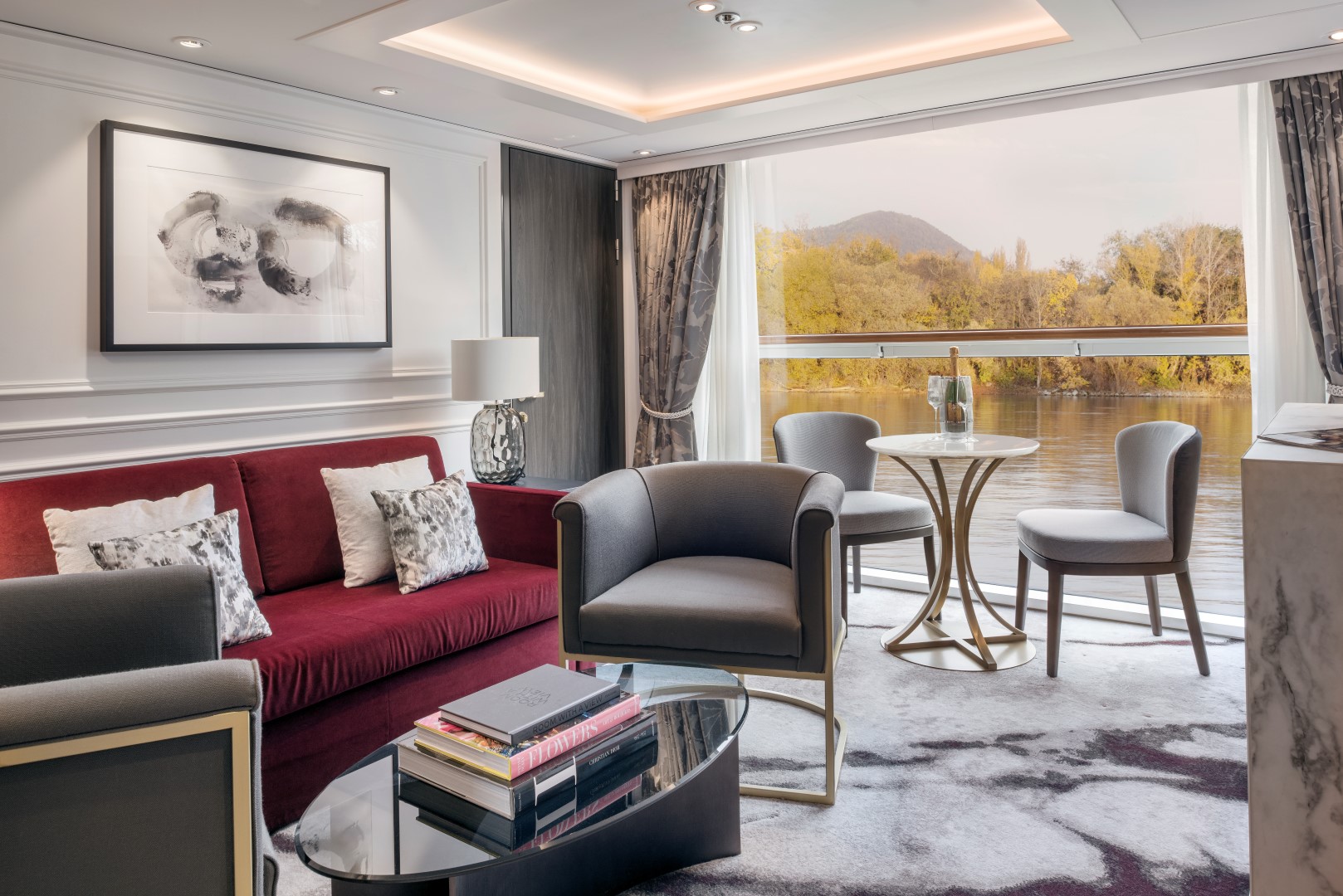
- Luxurious riverview suite (506 sq ft – 47 sq m) with a spacious living room
- King-sized bed (convertible to 2 singles), fine custom linens, walk-in closets, hair dryer, safe, individual thermostat, and flat-screen TV with infotainment center
- Large bathroom with Asprey bath and body products, plush towels, comfortable bathrobes and slippers, double sink vanity, and rain shower
- Additional amenities and service include: in-suite butler service; packing and unpacking assistance; in-room breakfast; daily fruit and cookie plate, and an elegant evening snack; espresso machine and fine teas; fully stocked mini bar; bottle of wine upon arrival; shoe shine; and free laundry service
- Note that amenities may differ from those of a Uniworld company-owned ship
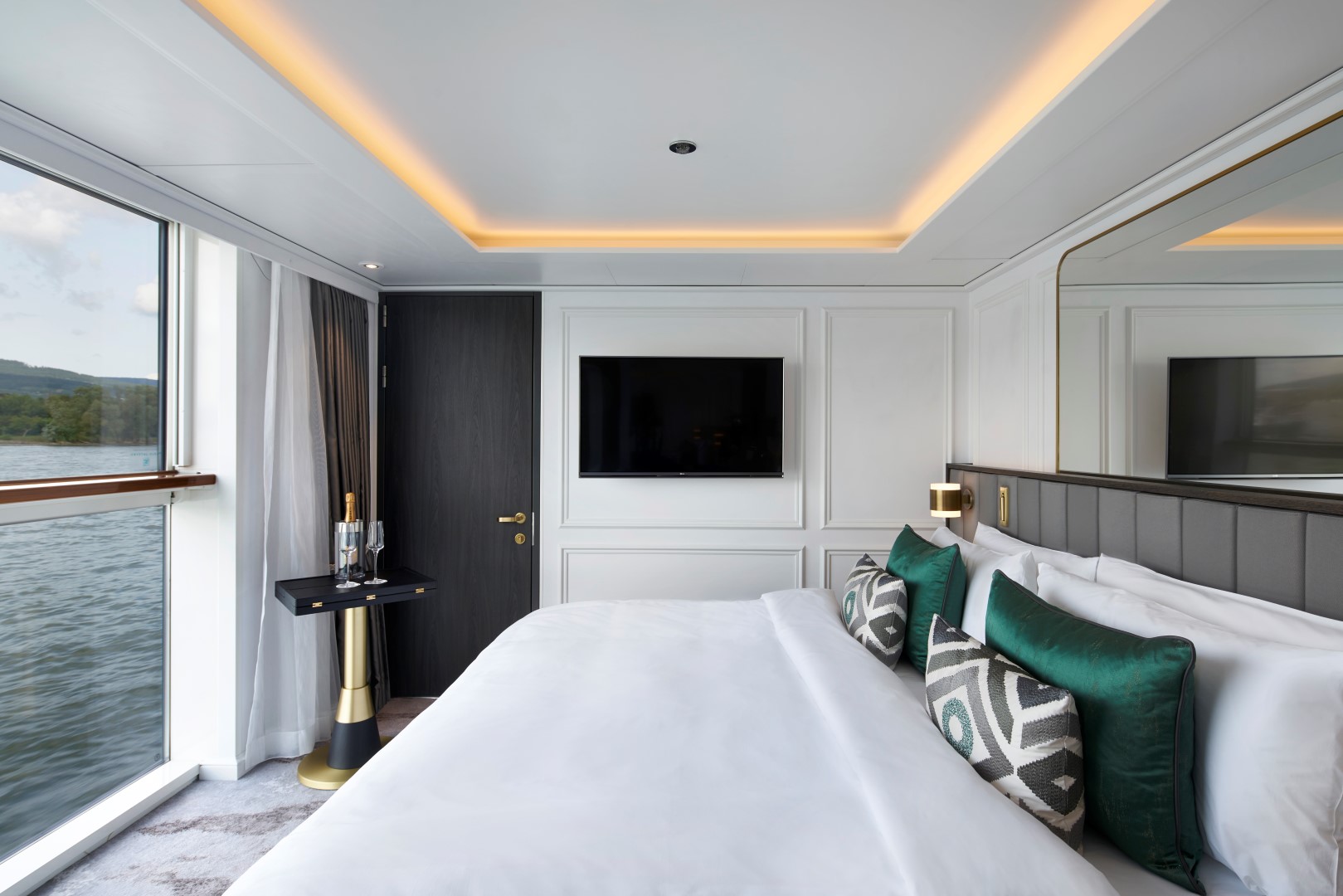
- Luxurious riverview suite (253 sq ft – 23.5 sq m)
- King-sized bed (convertible to 2 singles), fine custom linens, built-in closets, hair dryer, safe, individual thermostat, and flat-screen TV with infotainment center
- Large bathroom with Asprey bath and body products, plush towels, comfortable bathrobes and slippers, double sink vanity, and rain shower
- Additional amenities and services include in-suite butler service, packing and unpacking assistance, in-room breakfast, daily fruit and cookie plate and an elegant evening snack, espresso machine and fine teas, fully stocked mini bar, bottle of wine upon request, shoeshine, and free laundry service
- Note that amenities may differ from those of a Uniworld company-owned ship

- Luxurious riverview stateroom (253 sq ft – 23.5 sq m). *Please note that stateroom 202 is 237 sq ft (22 sq m), 16 sq ft smaller than the other Signature French Balcony staterooms
- King-sized bed (convertible to 2 singles), fine custom linens, built-in closets, hair dryer, safe, individual thermostat, espresso machine, and flat-screen TV with infotainment center
- Bathroom with Asprey bath and body products, plush towels, rain shower, comfortable bathrobes, and slippers
- Note that amenities may differ from those of a Uniworld company-owned ship
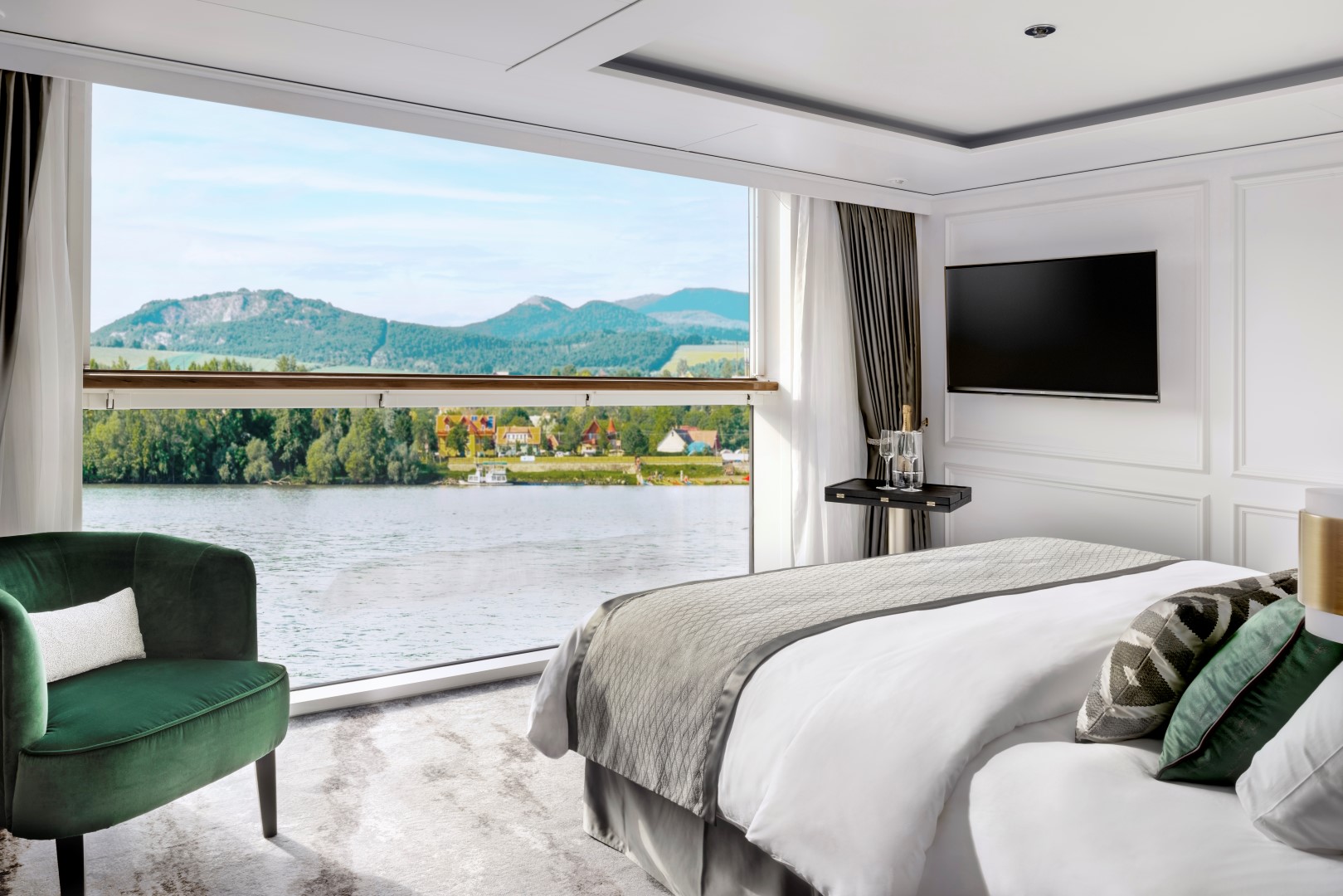
- Luxurious riverview stateroom (237 sq ft, 22 sq m; stateroom is 16 sq ft, 1.5 sq m smaller than the other Signature French Balcony staterooms)
- King-sized bed (convertible to 2 singles), fine custom linens, built-in closets, hair dryer, safe, individual thermostat, espresso machine, and flat-screen TV with infotainment center
- Bathroom with Asprey bath and body products, plush towels, rain shower, comfortable bathrobes, and slippers
- Note that amenities may differ from those of a Uniworld company-owned ship

- Luxurious riverview stateroom (188 sq ft – 17.5 sq m)
- King-sized bed (convertible to 2 singles), fine custom linens, built-in closets, hair dryer, safe, individual thermostat, espresso machine, and flat-screen TV with infotainment center
- Bathroom with Asprey bath and body products, plush towels, rain shower, comfortable bathrobes, and slippers
- Note that amenities may differ from those of a Uniworld company-owned ship
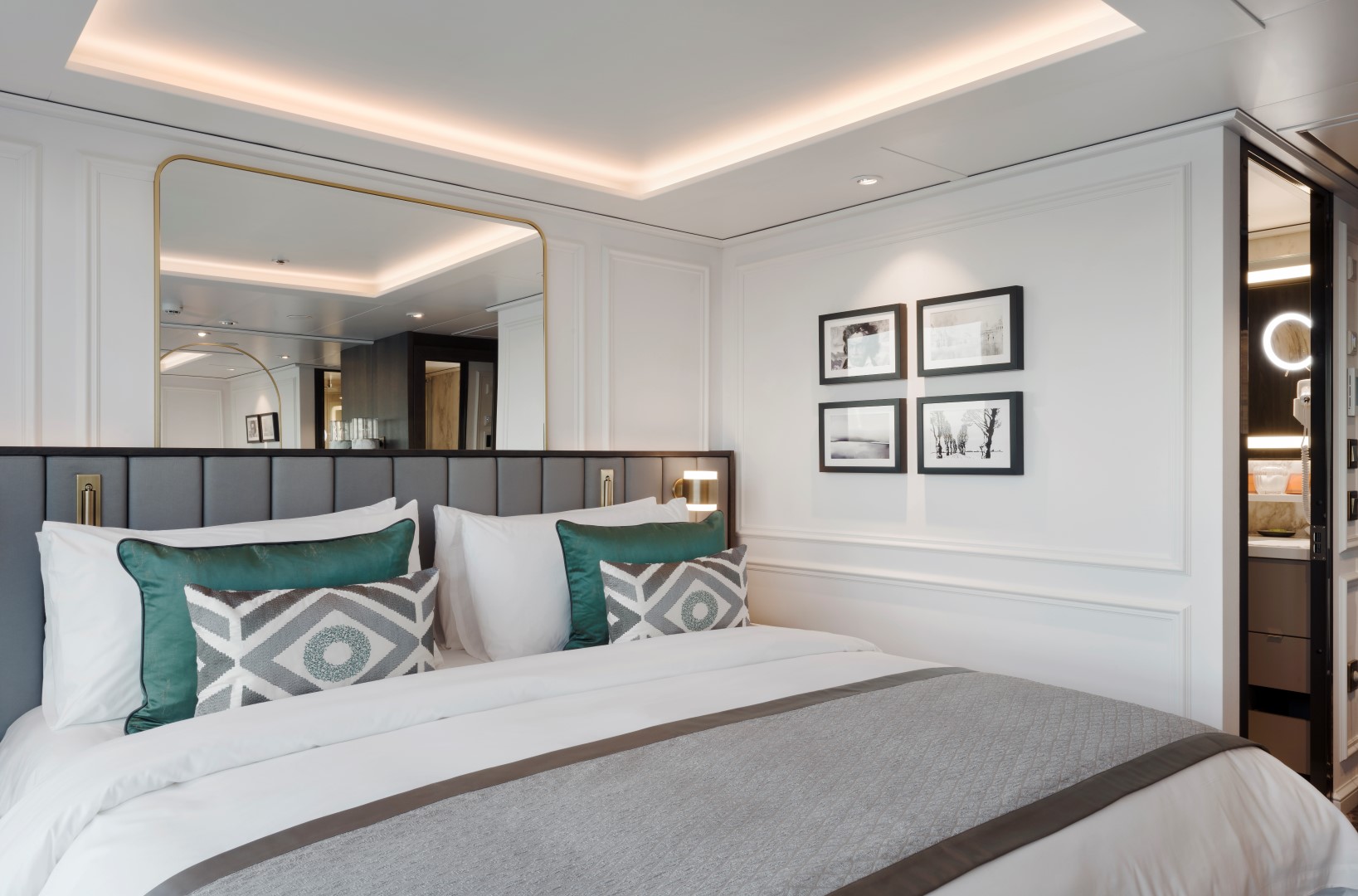
- Luxurious riverview stateroom (188 sq ft – 17.5 sq m)
- King-sized bed (convertible to 2 singles), fine custom linens, built-in closets, hair dryer, safe, individual thermostat, espresso machine, and flat-screen TV with infotainment center
- Bathroom with Asprey bath and body products, plush towels, rain shower, comfortable bathrobes, and slippers
- Note that amenities may differ from those of a Uniworld company-owned ship.

The Restaurant can be found on the Main Deck.
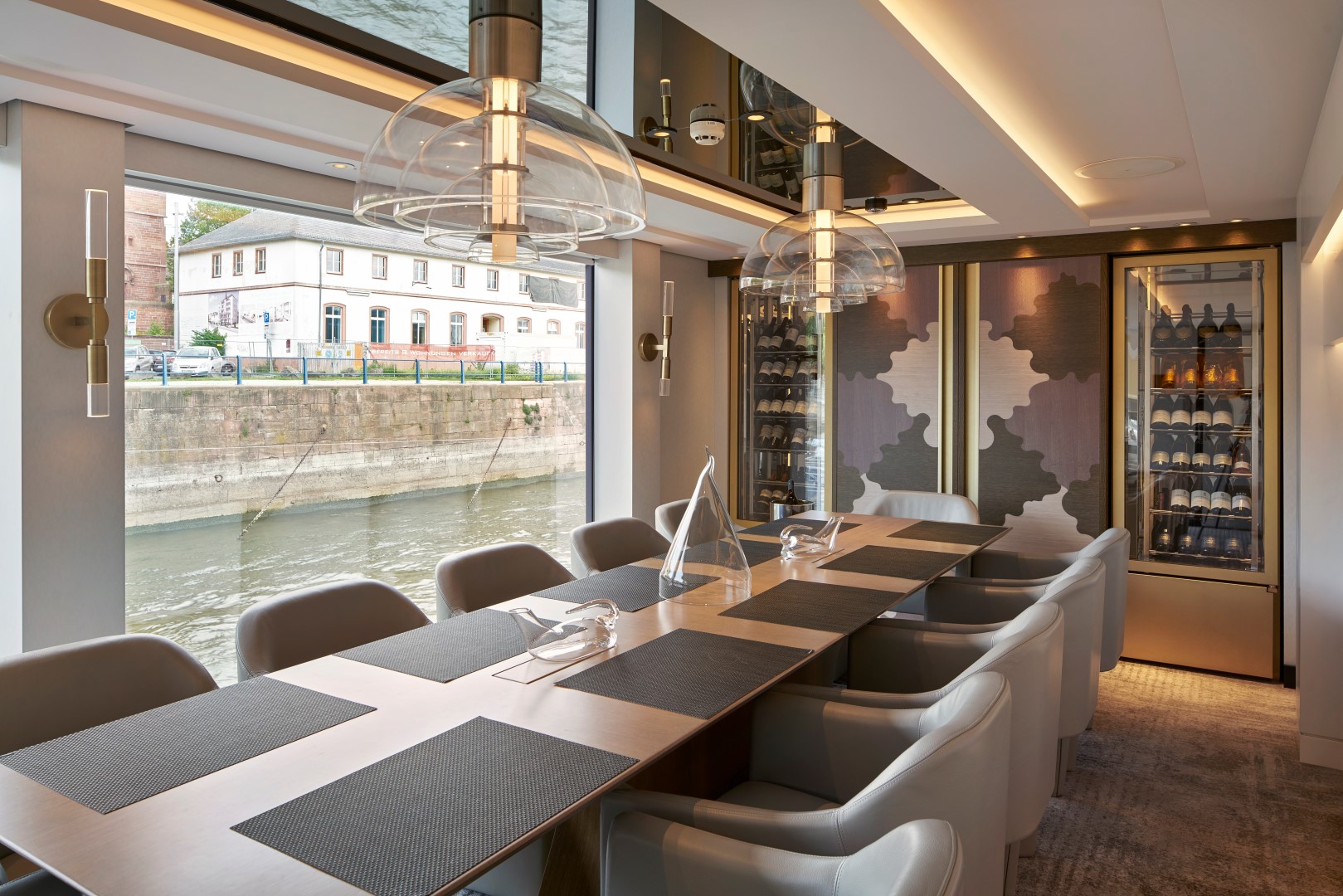
The Vintage Room can be found on the Rhine Deck.

The Bistro can be found on the Rhine Deck.

VILLAGE DAY
Get an in-depth look into the quaint destinations we visit and the local people who bring them to life.
LET’S GO
These active excursions feature walking, hiking, cycling, kayaking and golfing activities.
DO AS THE LOCALS DO
Experience life like a local, from riding the subway to stopping into a café for a local treat.
NIGHTS OUT
Private after-hours tours of popular attractions and fun local nightlife experiences.

From visiting a museum without the crowds to an after-hours tour of a famous landmark, these included, once-in-a-lifetime experiences are arranged privately for Uniworld guests.
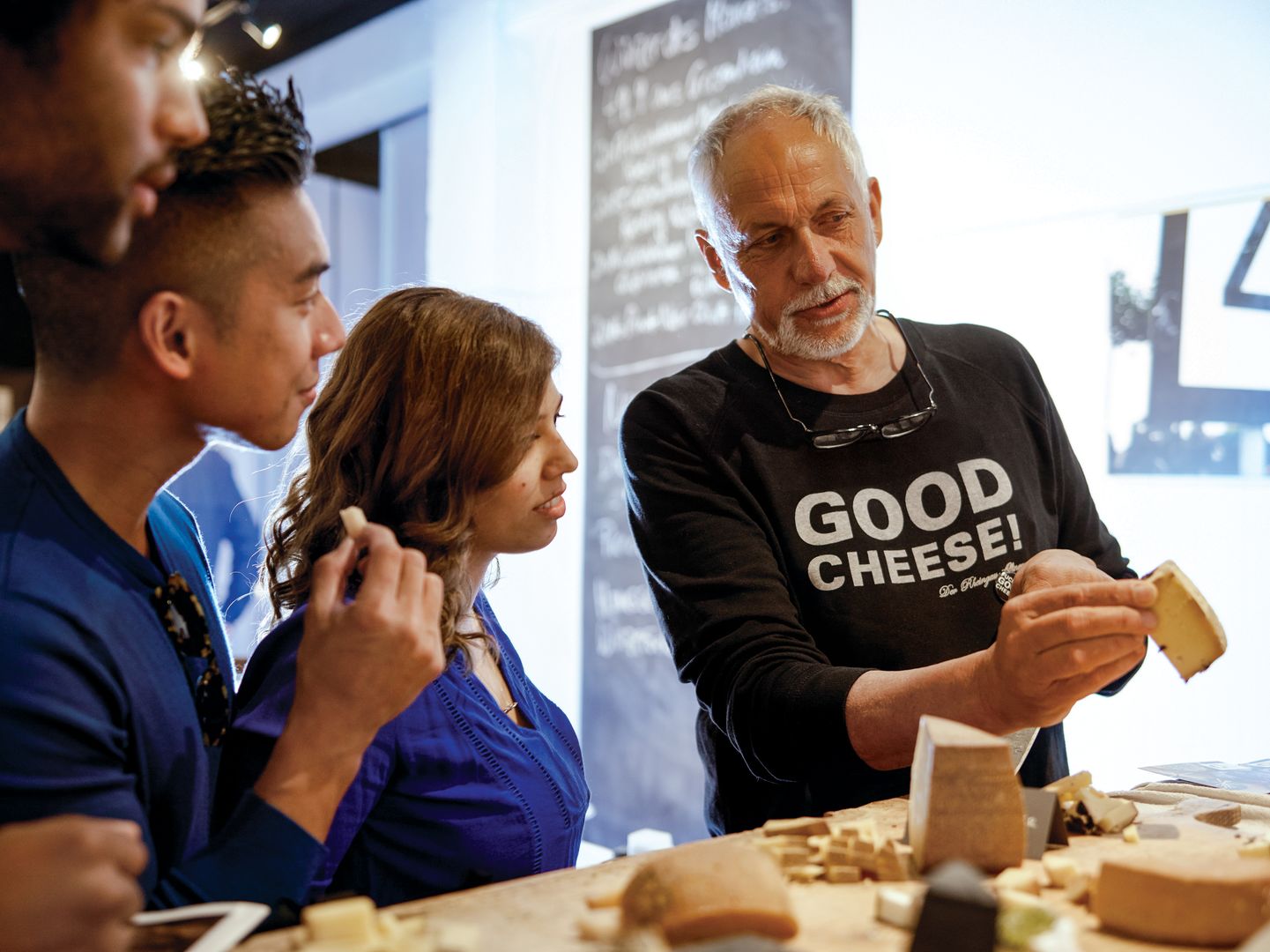
Tasting cheese with a cheese affineur in Rüdesheim or cruising through the streets of Bordeaux in a retro sidecar–if going above and beyond is what you’re after, you’ll be sure to enjoy our selection of Masterpiece Collection optional experiences, available for an additional cost.
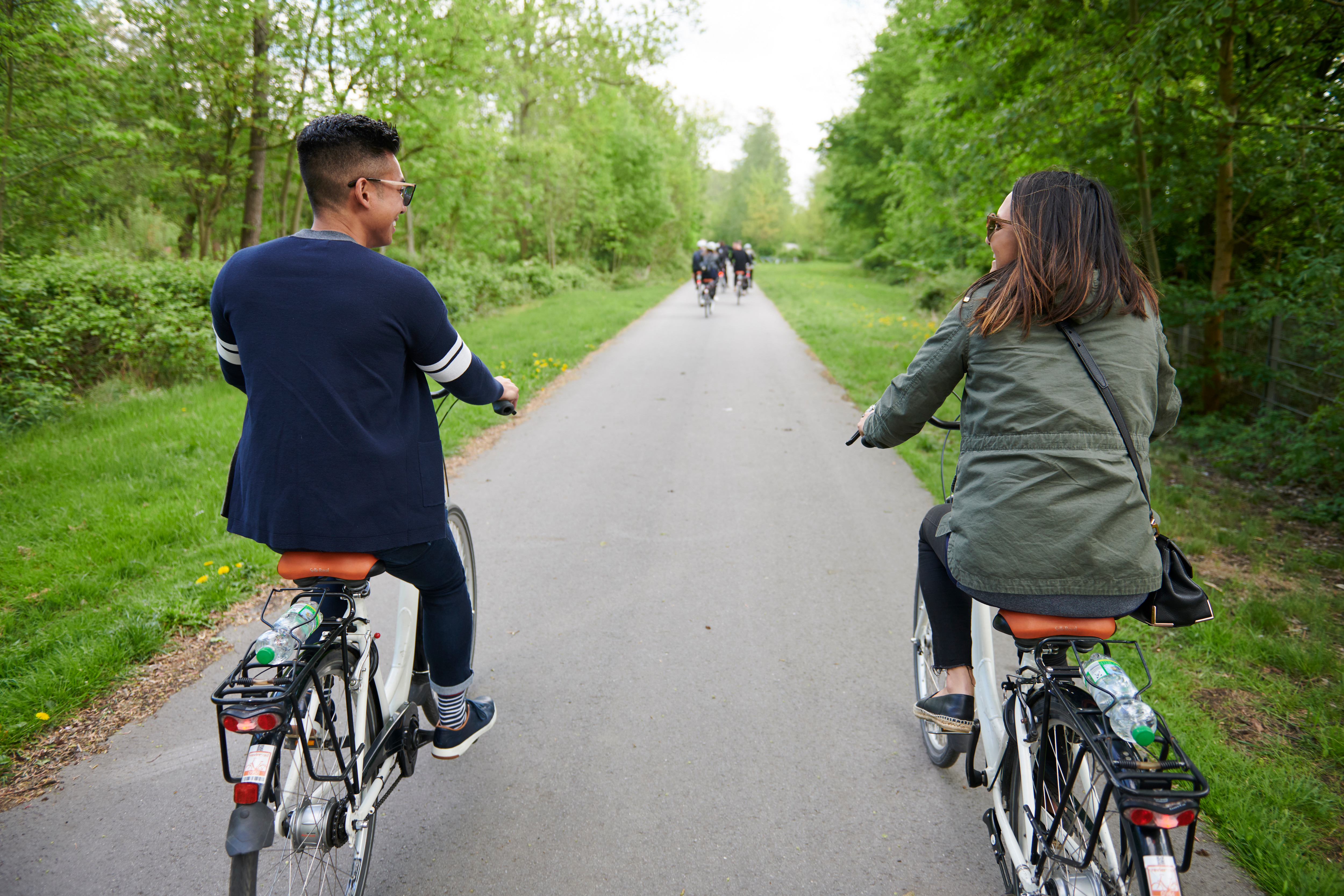
Guests looking to treat themselves and their loved ones to a private, extraordinary experience can arrange a Curated Service. These experiences can be booked onboard, are often accompanied with a private car and/or guide, are fully customizable, and provide guests with an opportunity to create an exceptionally special moment just for them.
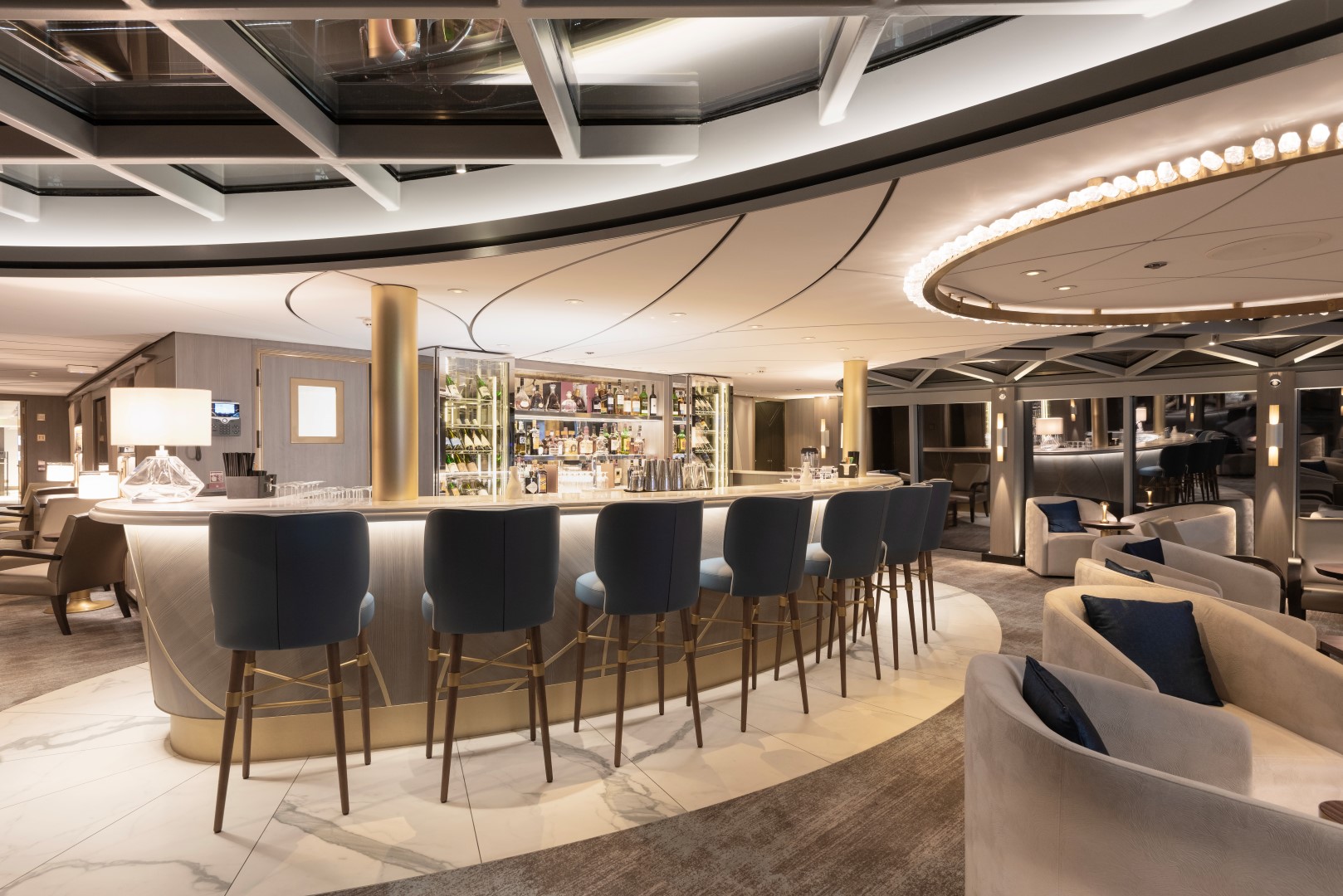
The Lounge can be found on the Rhine Deck.
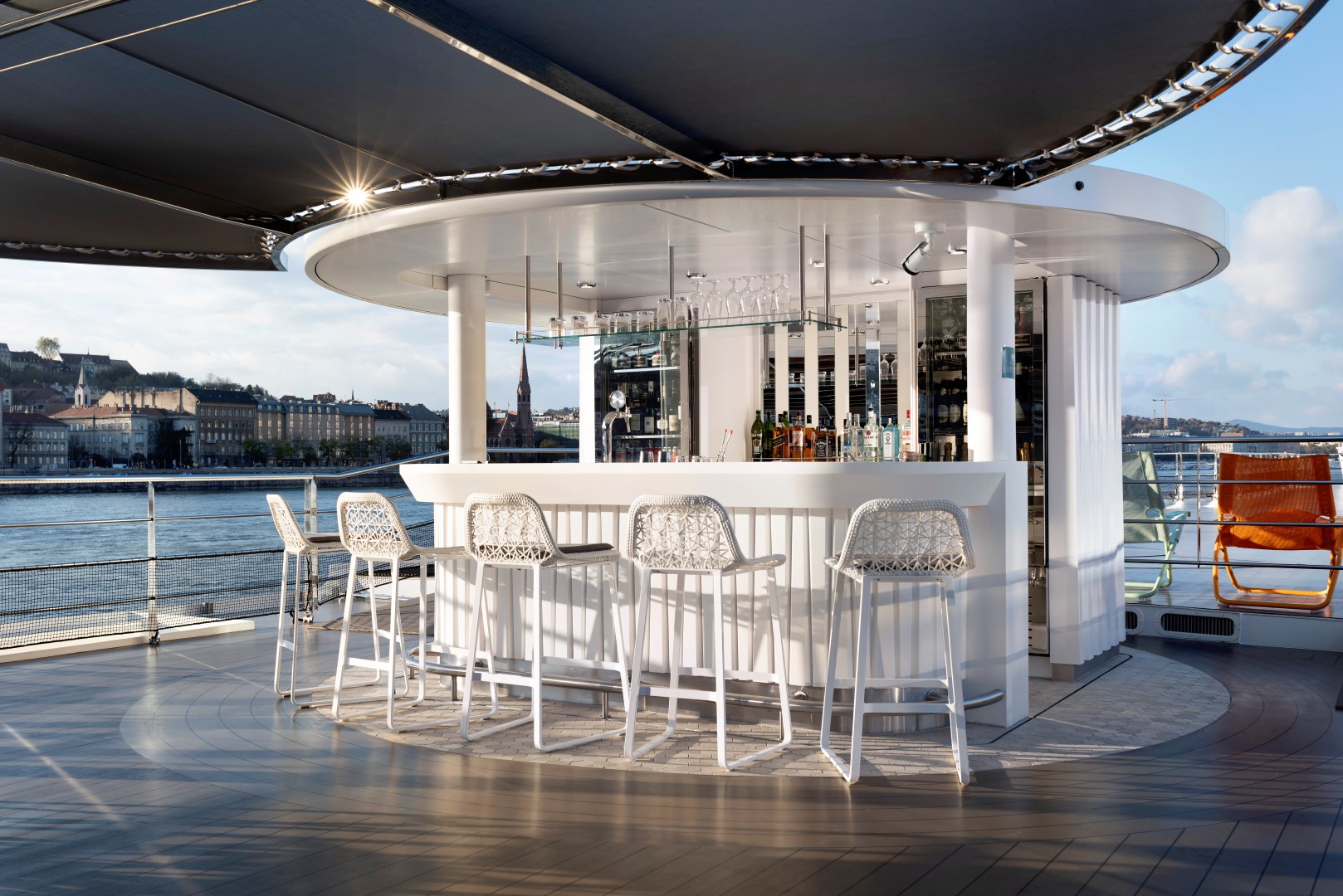
Vista Bar can be found on the Sun Deck.
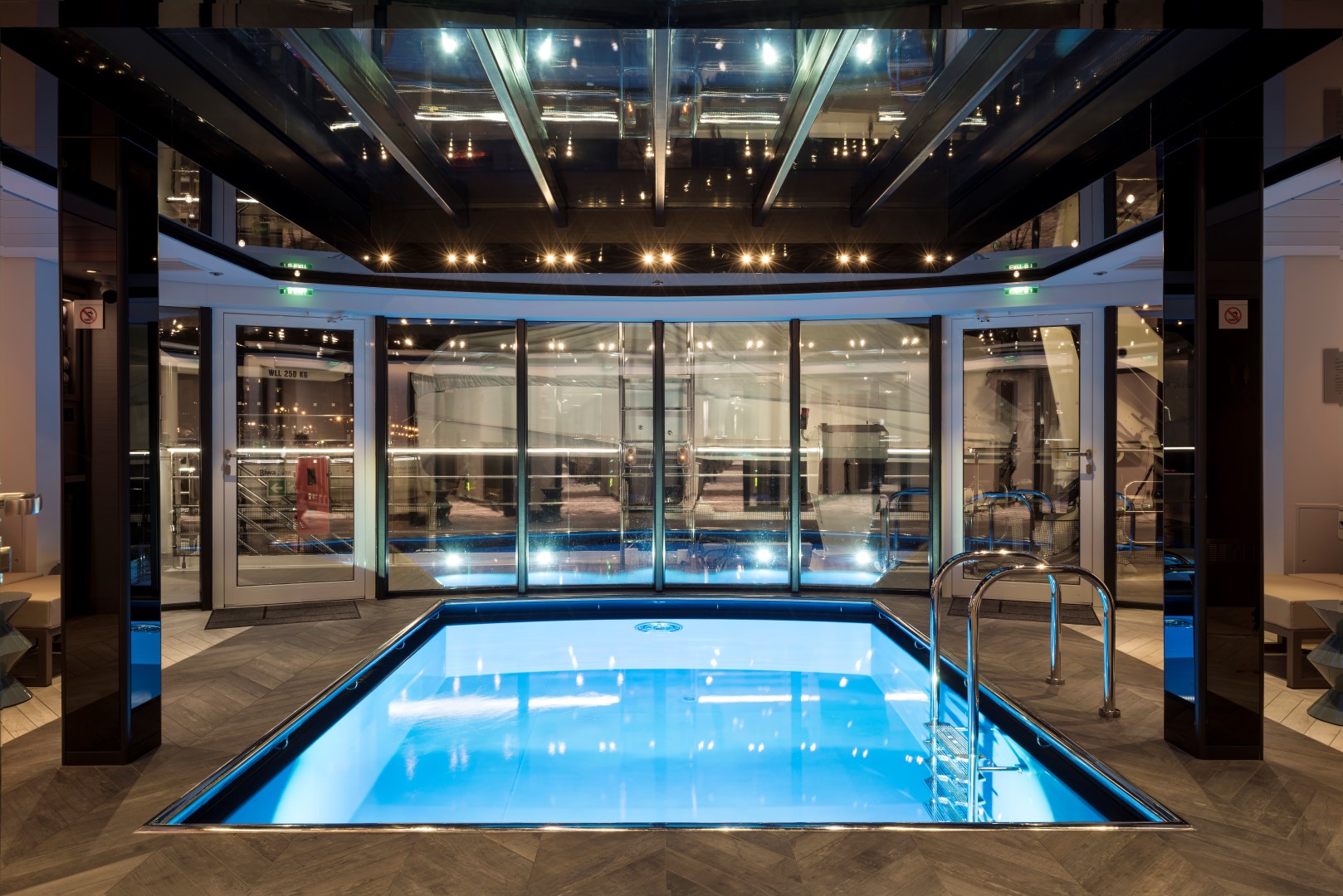
The Swimming Pool can be found on the Rhine Deck.

The Gym can be found on the Moselle Deck.
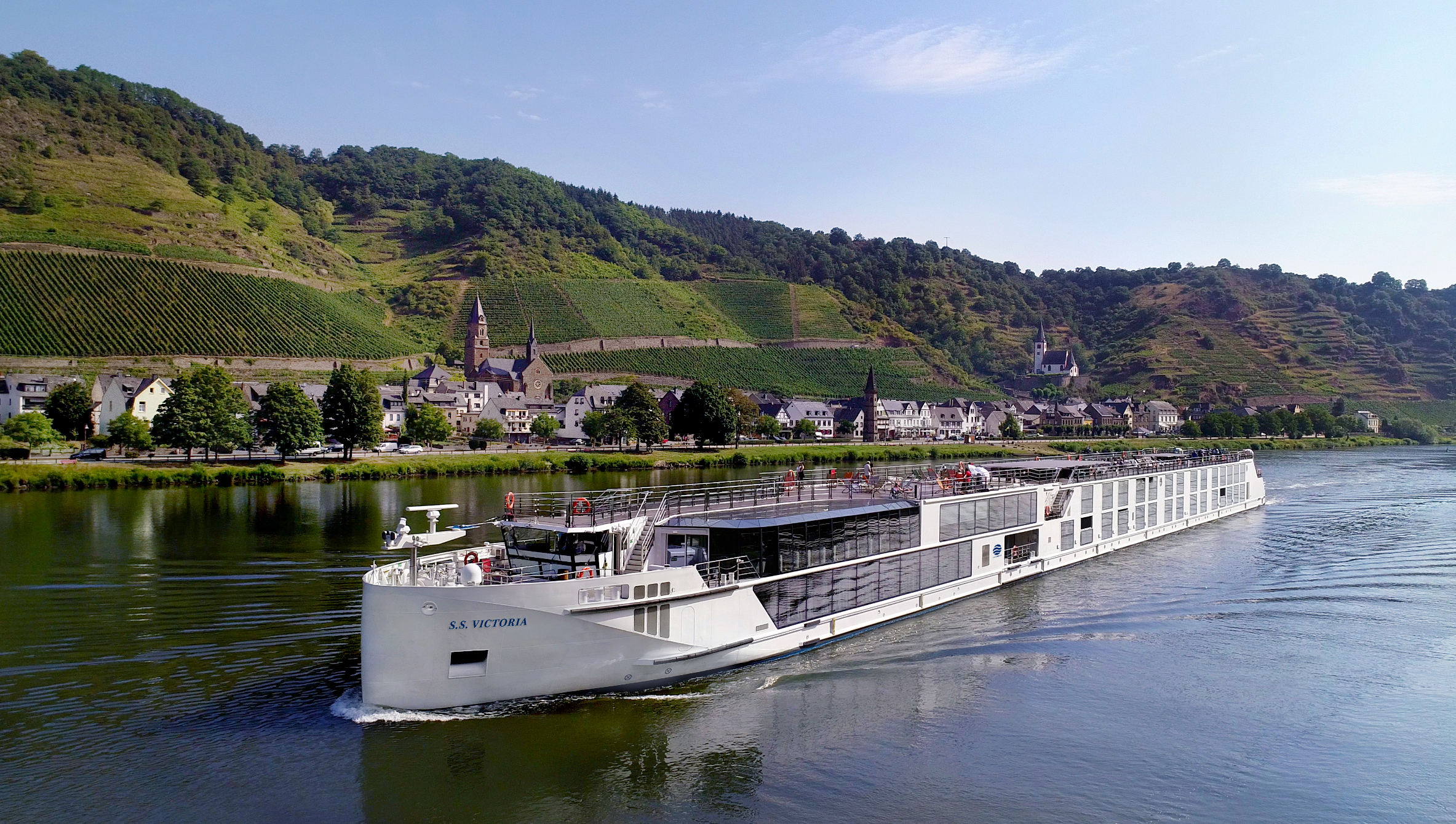
Most ships have either a self-serve laundrette (with ironing board) or laundry service for an additional fee. Please contact info@uniworld.com to find out what services your ship offers. No dry cleaning services are available on any ship.
Select ships offer complimentary Wi-Fi access. Please view your ship’s specific information page on our website or email us at info@uniworld.com to find out if Wi-Fi is available onboard. Service may be briefly interrupted in remote areas, while sailing, or when moving through locks, and the speed will likely be slower than what you are used to back home.
For the comfort of all our guests, smoking is only permitted on the sun decks of our ships. Smoking is not permitted on motorcoaches. This policy applies to all forms of smoking materials including vapor e-cigarettes.
We also ask guests to refrain from smoking on shore excursions/tours, especially since many historical sites and other tourist attractions are now smoke-free as well.
It’s best to pack for a range of weather conditions, depending on the season and regions visited. Wearing layers will allow you to easily adjust to temperature changes. Limiting your wardrobe to a simple mix-and-match color scheme will keep your bags to a minimum.
We recommend wearing comfortable, smart-casual clothing both onshore and onboard. We also suggest sturdy walking shoes, as you will do a significant amount of walking on shore excursions, often over cobblestones or uneven terrain. A sun hat, rain gear, and a coat or wrap for chilly evenings are useful items to have. For dining ashore, concerts, special events onboard, etc., men may want to bring a sports jacket and women a cocktail dress or pantsuit. Neckties are optional. Please note that shorts are not allowed at dinner aboard the ship.
In our experience, most young children—especially those under 4—are simply not yet old enough to enjoy river cruising. We make no special arrangements for little ones and offer few kid-friendly activities onboard or onshore. Please note: Our Generations program departures include programs and services designed for families traveling with children. Adults accompanying children are responsible for their safety and behavior onboard and onshore.
Europe, Asia, India, and Egypt: Guests should be 4 years of age or older. Guests who are less than 18 years of age must be accompanied by a parent or guardian and booked in a cabin with someone who is 21 years of age or older.
Peru: Guests must be 7 years of age or older. Guests under 21 must be booked in a cabin with someone who is 25 years of age or older, or traveling with a parent or guardian who is booked in a connecting suite. Some excursions may not be suitable for young children.
Kindly inform us in advance if you have specific dietary requests (e.g., low-fat, low-calorie, gluten-free, sugar-free, vegetarian, etc.). This information can be provided to us when completing your Passenger Information Form. We have a “Travelling Lite” menu for guests seeking more health-conscious options, as well as light lunches, vegetarian options, and generous buffets that offer something for everyone. We will do our very best to accommodate your needs given the resources available to us.
Uniworld strives to provide a safe, enjoyable, and memorable travel experience for all passengers. The Company welcomes passengers with special needs or disabilities. However, please note the following:
Passengers are required to advise the Company, in advance, of any physical, medical, or other special needs that require accommodation.
All guests must ensure they are medically and physically fit for travel. The Company may impose safety requirements necessary for the safe operation of the tour. The Company may also exclude an individual from participating in a tour or an activity if that individual’s participation poses a direct threat to health or safety.
The Company does not provide personal devices (such as wheelchairs, hearing aids or prescription eye glasses) or services of a personal nature (such as pushing a wheelchair or assistance in eating, toileting or dressing). A companion capable of providing such assistance must accompany any passenger who requires services of a personal nature.
The Company does not employ medical personnel. Any necessary medical attention will be provided by a local facility at the passenger’s expense. The Company is not responsible or liable for any losses or costs incurred as a result of medical services obtained while on tour, or for the quality of the care or services received. Passengers should be aware some tours include rough terrain, extensive walking over cobblestone streets, uneven pavement, steps and locations which may not be easily accessible or accessible by wheelchair.
During the tour, the Company may make arrangements with carriers, hotels and other independent suppliers to provide travel services. These parties are independent entities over which the Company has no control. Accommodations on international tours may differ from those in the united kingdom. The Company cannot guarantee disability access or accommodations for passengers travelling on international tours. The Company may, in its sole discretion, decline the booking of any passenger or remove any passenger who cannot comply or refuses to comply with the Company’s terms and conditions. The Company is not responsible for any costs incurred in the event a passenger is removed from a tour. Passengers agree not to hold the Company or any of its related entities liable for any actions taken under these terms and conditions.

- Sun Roof
- Canopy
- Vista Bar
- Skylight

- Swimming Pool
- Bistro
- Vintage Room
- Lounge
- Stage
- Wheelhouse
- Suite
- Royal Suite
- Deluxe French Balcony
- Elevator

- Reception
- Lobby
- Pantry
- Restaurant
- Signature French Balcony
- French Balcony
- Elevator

- Guest Laundry
- Fitness Center
- Serenity River Spa
- Stairs

